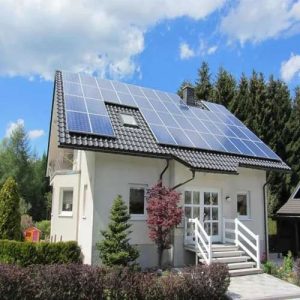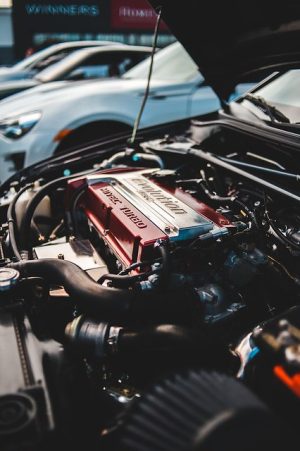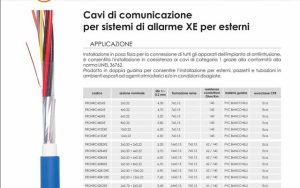
How a Household Power System Works
Everyday we use electric power for heating, cooling, cooking, refrigeration, lighting, sound, computation and entertainment. But how does it get to our homes?
Electricity comes in through two service wires carrying 120 volts, plus a neutral wire that returns to the power company. It then passes through the meter and into your main panel.
Basics
A household power system consists of many components that work together to provide electrical current to operate household appliances and lighting. These include the service masts, meter box and circuit breakers.
Whenever you plug something in, the power that runs through it comes from your house’s main Household Power System power lines. These lines come down from poles or through conduit (hollow pipe) buried underground.
The power line to your house passes through a transformer where the voltage is lowered so that it can travel on smaller, distribution lines to your neighborhood. Another set of smaller transformers reduce the voltage even further so that it’s safe for your household use.
The electricity flows through a series of wires, including the hot, neutral and ground wires that are connected to your house’s electrical panel. This energy is called AC, or alternating current, because it oscillates back and forth around 60 times per second. It is different from the direct current that you might find in a battery or motor, which is a constant flow of electrons.
Circuits
Power lines carry electricity into houses, but there’s a lot more equipment to get it from the street to your light fixture. It’s amazing that it works, and knowing how it all fits together can help you troubleshoot problems when they occur.
The high-transmission voltage is stepped down to normal 115/230-volt household current in the service panel by circuit breakers or fuses. Each circuit’s hot wire carries power to outlets in your home, and a neutral (white or green) wire carries electricity back to the service panel.
If an appliance or fixture carries too much current, the hot wire can burn out or overheat and melt, directly connecting power to ground. The ground wire carries excess flow away from the house to prevent fires and injuries.
The electric meter is mounted where electricity enters your home and shows your power use to the utility company. It’s protected by law against tampering. Once inside the house, the power runs to electrical boxes in your walls. It’s important to have these boxes because the National Electric Code requires that you splice wires only in electrical boxes.
Breakers
The breaker box contains a set of circuit breakers that switch off (‘trip’) power when they detect certain safety hazards. This includes a circuit overload, which happens when too many appliances are plugged into one of the circuits and demand more current than it can safely handle. It also can include a short circuit, which happens when the hot and neutral wires are connected incorrectly.
Standard circuit breakers, which require heat to trigger, are designed to detect these problems. They shut off the circuit, preventing electrical damage to the wiring and creating a fire hazard. They’re a good replacement for traditional fuse boxes.
A breaker labeled GFCI has special circuitry that detects when the current in the neutral and hot wires isn’t equal. This can happen when electricity leaks from an appliance or through a frayed wire, and it can shock you. GFCI breakers are commonly found in outlets near bathroom sinks and are required by building codes for other household fixtures in wet or potentially wet areas. There is also a type of breaker called an AFCI that detects sparks.
Meters
The electric meter, mounted outdoors where the power lines enter your house, measures how much electricity you use. It’s monitored by your electric utility company, and tampering is illegal. The meter also controls the amount of electricity the system delivers to your household in response to grid demand. In smart houses, the meter communicates with the HEMS (Home Energy Management System) and acts as the two-way communication link for demand response with the utility.
In 1792, French astronomers Pierre Mechain and Jean-Baptiste Delambre built a prototype meter bar of platinum. While it wasn’t perfect — it was about 0.2 millimeters shorter than the distance between Dunkirk and Barcelona — it served as an accurate standard of length, Household Power System and subsequent definitions of meters hew closely to its original realization. Later, scientists refined the technology behind the meter to make it more resistant to distortions that can occur as a bar is flexed. Among other advances, they created an inscription of lines across the bar’s surface that would better resist distortion than the ends of the bar.
Backup Power
If you live in a region prone to severe weather and frequent power outages, a backup home battery system can be an affordable life-saver. These systems offer a way to eliminate the anxiety of whether you’ll have access to food, water or medicine when the grid goes down.
The options range from small portable gas generators (starting at around $500) that can run a few appliances and a refrigerator for days as long as there’s fuel, to whole-home systems that connect directly to your home power panel and require professional installation. But the most affordable and sustainable option is a developing technology that powers some or all your home’s electrical circuits through what’s essentially a giant battery, using renewable solar energy to charge it when you’re not using it.
The EcoFlow home ecosystem combines two DELTA Pro portable power stations with a double voltage hub to provide enough energy storage to power the average house for a few days. It can also be charged with rooftop solar, reducing your energy costs and qualifying you for tax credits.


